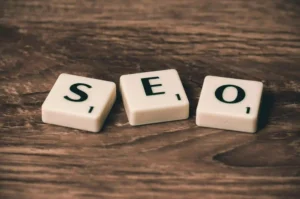Introduction
In today’s digital-driven world, Search Engine Marketing (SEM) has become a cornerstone for businesses striving to attract potential customers online. Search Engine Marketing, or SEM, encompasses paid advertising strategies that elevate a brand’s visibility on search engine results pages (SERPs). By utilizing SEM, businesses can target specific audiences actively searching for their products or services, leading to higher conversions and improved brand recognition. This article explores the core components, benefits, and best practices of Search Engine Marketing and offers insights into how businesses can maximize their SEM efforts.
What is Search Engine Marketing?
Search Engine Marketing is a form of digital marketing focused on promoting websites by increasing their visibility on search engines, primarily through paid advertising. Unlike Search Engine Optimization (SEO), which aims to improve organic rankings, SEM delivers immediate visibility through ads at the top or bottom of search results. The primary components of Search Engine Marketing include:
- Pay-Per-Click (PPC) Ads: The most common SEM model, where advertisers pay only when a user clicks on their ad.
- Cost-Per-Thousand Impressions (CPM): This model focuses on ad impressions, where advertisers pay based on the number of times their ad appears, rather than clicks.
- Google Ads: Google’s advertising platform, enabling businesses to bid on keywords and display ads in Google search results.
- Bing Ads: Microsoft’s alternative to Google Ads, providing access to a different but valuable audience.
By leveraging SEM, businesses can quickly place their ads in front of potential customers, helping to drive traffic, brand awareness, and conversions.
How Does Search Engine Marketing Work?
Search Engine Marketing works through a bidding system where advertisers bid on specific keywords that users are likely to search for when looking for their products or services. The SEM process generally involves the following steps:
- Keyword Selection: Advertisers identify high-traffic keywords that align with their offerings using tools like Google Keyword Planner, SEMrush, or Ahrefs.
- Bid Management: Advertisers set a bid or maximum amount they’re willing to pay for each click or impression.
- Ad Auction and Placement: When a user searches for a keyword, search engines run an auction to determine which ads to display based on bid amount and ad quality.
- Ad Quality Score: Search engines, particularly Google, use an Ad Quality Score to assess an ad’s relevance and expected click-through rate (CTR). Higher quality scores improve ad rankings and can reduce cost-per-click (CPC) rates.
These auctions occur instantly, ensuring that users see the most relevant and high-quality ads each time they search.
Key Strategies for Effective Search Engine Marketing
- In-Depth Keyword Research: Keyword research is critical in any Search Engine Marketing campaign. By selecting the right keywords based on user intent and competition levels, advertisers can improve their reach and relevance. Tools like Google Keyword Planner can help identify keywords with the right balance of search volume and competition.
- Ad Copy Optimization: Effective ad copy is crucial for attracting clicks. A well-structured ad includes a compelling headline, a brief but informative description, and a clear call-to-action (CTA) that guides users to take the desired action.
- Optimized Landing Pages: The landing page users arrive on after clicking an ad should be highly relevant, user-friendly, and optimized for conversions. High-quality landing pages improve the user experience, increase conversion rates, and positively impact the ad’s Quality Score.
- Bid Adjustments: Bid adjustments allow advertisers to set different bids based on factors like time, device, and audience. This can help refine targeting and improve ad performance while controlling costs.
- Continuous Testing and Optimization: A/B testing ad elements like headlines, descriptions, and CTAs allows advertisers to identify the most effective combinations. Regularly monitoring and adjusting campaigns ensures they remain cost-effective and competitive.
- Audience Targeting and Scheduling: SEM allows advertisers to reach specific audiences by setting parameters like location, demographics, and time of day. This precision targeting helps ensure ads reach the right users at optimal times.
Benefits of Search Engine Marketing
- Immediate Visibility: Unlike SEO, which takes time to improve rankings, SEM provides instant visibility on SERPs. This makes it ideal for businesses looking for quick results or with time-sensitive campaigns.
- Increased Targeting Precision: Search Engine Marketing allows advertisers to target users actively searching for related products or services, which increases the likelihood of conversion.
- Cost Control and Flexibility: With PPC, advertisers pay only when a user clicks on their ad, making SEM highly cost-effective if well managed. The flexibility to adjust bids and budgets allows for control over ad spend.
- Enhanced Brand Awareness: Consistently appearing in search results, even through paid ads, can help improve brand awareness and credibility in the eyes of potential customers.
- Detailed Analytics: SEM platforms like Google Ads offer comprehensive analytics, providing insight into clicks, impressions, conversions, and return on investment (ROI). These metrics allow businesses to fine-tune their strategies and improve performance over time.
- Competitive Edge: Search Engine Marketing enables businesses to compete in their industry, especially when competitors are ranking high in organic search results. SEM can place businesses at the top of SERPs, even if their SEO efforts are still underway.
Challenges of Search Engine Marketing
While Search Engine Marketing has numerous benefits, it also presents certain challenges:
- High Competition and Rising Costs: Popular keywords can become expensive due to high competition, making it difficult for small businesses with limited budgets to compete.
- Click Fraud: Although rare, click fraud occurs when competitors or bots repeatedly click on ads, driving up costs without genuine leads.
- Ongoing Optimization Requirement: To maintain performance, SEM campaigns need continuous monitoring, testing, and adjustments.













